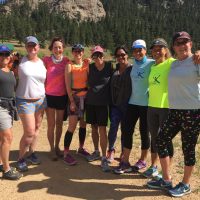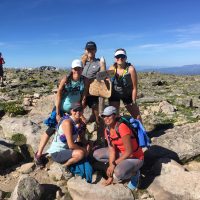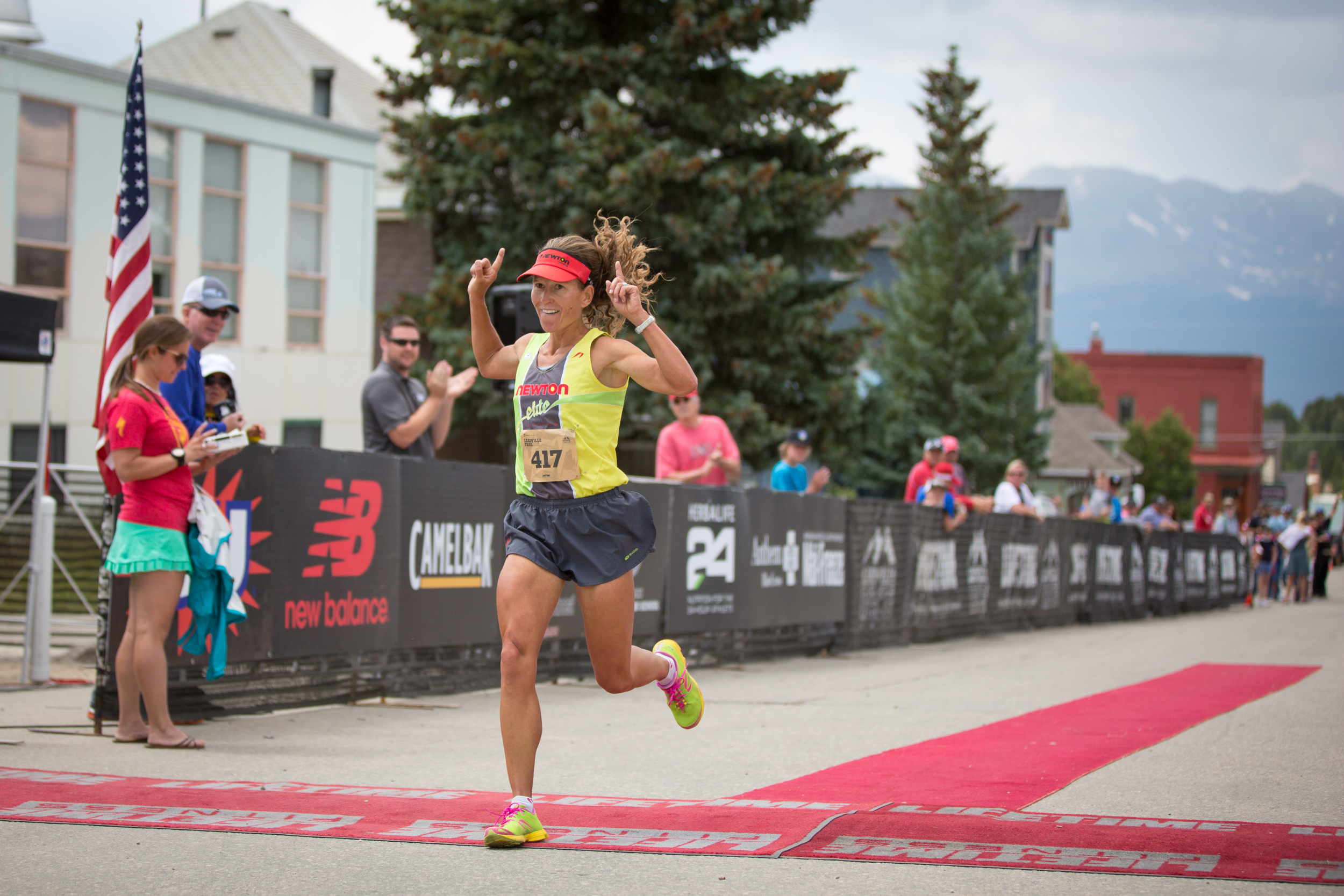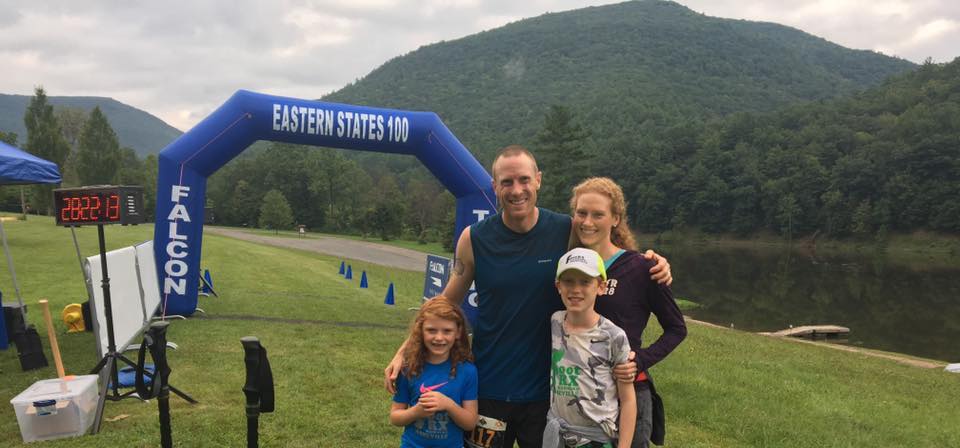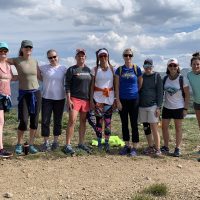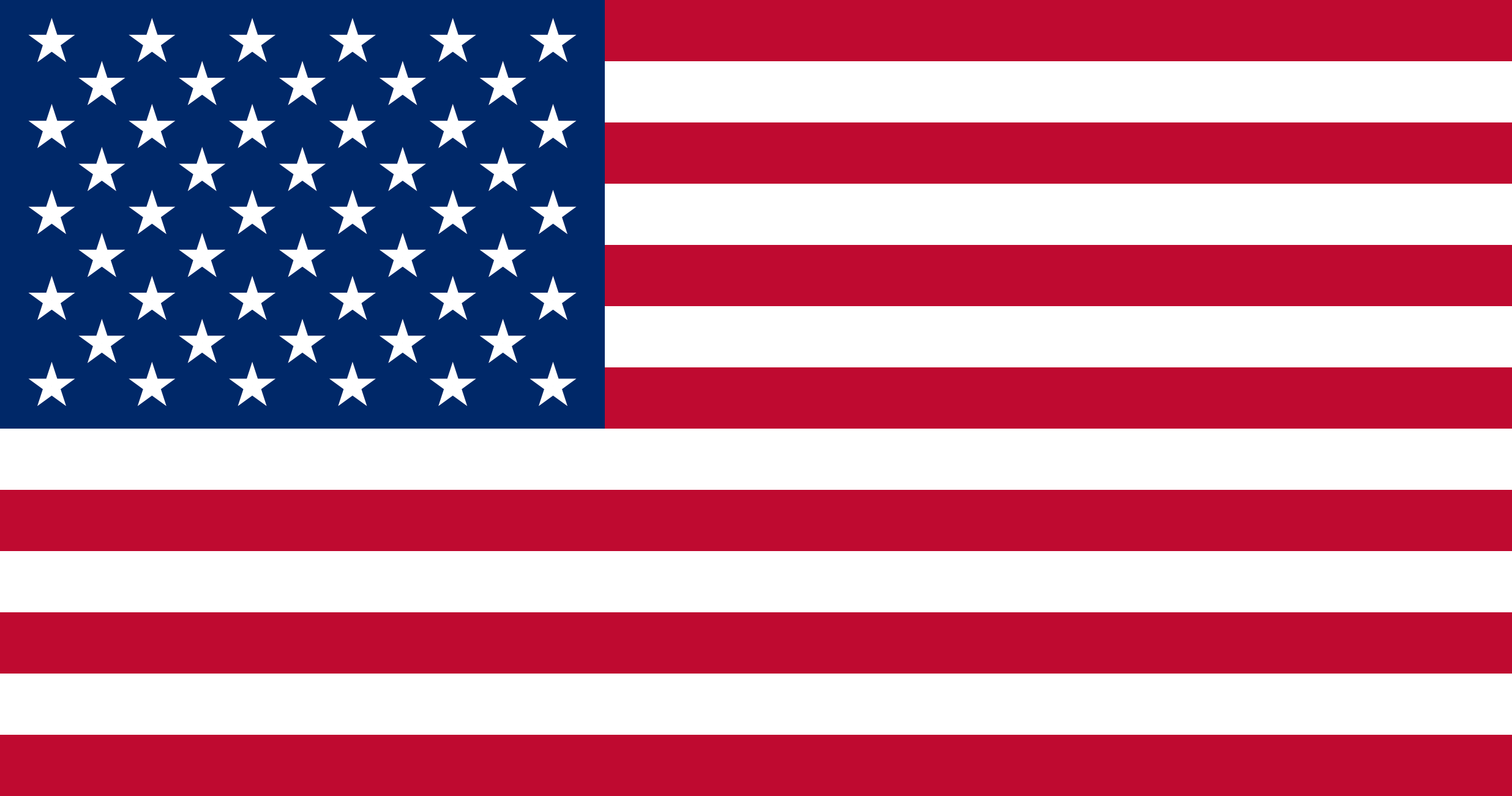[vc_row][vc_column][vc_column_text margin_bottom=”5″]This positive running story comes from Shannon Payne, a bouncy and energized fun loving ex-track turned mountain runner who hails from Colorado Springs. I first met Shannon at the US Trail Running Conference in 2014, cheerfully engaged and talking about running with many attendees even though she had a boot on one foot! Shannon is now the Southern CO/NM Tech Rep for Salomon & Suunto. We recently caught up with Shannon and had the chance to ask her several searching questions about her background, running for Team USA, how to keep a positive focus, and much more. Here is the result of that interview.
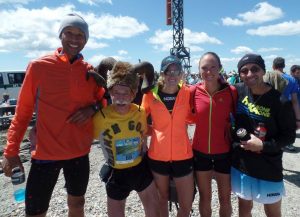 Can you share a little about your running background, and what led you to here?
Can you share a little about your running background, and what led you to here?
I started running totally on a whim my freshman year in high school mostly just for something to do and because cross country was the only sport that didn’t do cuts. Prior to that, I’d had an illustrious career in softball. By illustrious, I mean that I plucked dandelions out in right center field for 3 seasons. But as is the story for a lot of people who just randomly pick up running, it ended up being a bit of a game-changer as far as the change of direction that it brought about. I was a low 30-something minute 5k runner my first few races, but I had found a niche and there was a pretty big improvement curve, and by my senior year I had gone to State a few times and ended up going to CU-Colorado Springs to run collegiately, and had some success there and left with a few All-American titles. After college I still didn’t want to be done, so I did the typical post-collegiate runner thing consisting of training and slinging shoes, working at Boulder Running Company in Colorado Springs. My boss at the time, Cody Hill, had instated an adidas-sponsored team back in 2006, BRC/adidas, which was comprised of a couple dozen guys and girls from around the state that was hugely successful; winning a several team titles and runner-up titles among many professional, fully-sponsored Olympic Development teams at USATF Club XC Nationals each year, just to give some perspective on how solid the team was. So Cody really had a great thing going and provided a ton of opportunity for post-college runners throughout the state, and I don’t think that I speak just for myself when I say I’ll always have him to thank for many of the opportunities I had in the sport for several years. Anyway, back in 2014 I was feeling a bit stale in the track and road running department, so I decided to give the Black Canyon Ascent out in Montrose a try that summer, and finished just a few seconds off of the course record, which was (and still is) held by Kim Dobson, so I knew it wasn’t a soft record by any means because she’s a rockstar when it comes to climbing. At any rate, it was fun and I really liked it, and that made me decide to run Mt. Washington a few weeks after, so I won that and, unbeknownst to me at the time, that year the race was a qualifier for the World Mountain Running Long Distance Championships, so it qualified me for the US team for that a couple months later. The stars really aligned that year, and it encouraged me to stick with the mountain running scene and see where it could go.
What has been your biggest take away that you have learned on the way through your career?
Running is a great teacher, so there have been so many takeaways, but I’ll try to narrow it down to just one. My biggest takeaway I would say has actually become apparent in really recent months. You always hear people say to “enjoy the process,” and that sounds great and all, but that was never something I really grasped until the last couple of years, where I experienced a lot of plateauing and various setbacks with my own running. I went from winning my first big-girl mountain race and making my first international team, and even being offered a sponsorship (which just blew my mind), to warming the bench for a long while and occasionally having acquaintances ask me “so do you still run?” So I’ve had take that advice to heart a lot more and actually figure out what it means to “enjoy the process.” It sounds easy and not to mention obvious, but like a lot of competitive people I’m pretty goals-and-results driven in most areas of life, including running, and when goals and results are hampered, it forces you to get pretty real about why you’re doing it. I’ve still got a slew of goals that I’d rather keep to myself for the moment, but I’ve gotten to where if I’m really honest with myself, I know I’ll love running just as much with or without a race on the horizon.
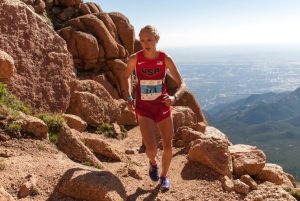 You have represented Team USA (how many times?) – what does it feel like pulling on a Team USA vest, and what did you enjoy about those experiences the most?
You have represented Team USA (how many times?) – what does it feel like pulling on a Team USA vest, and what did you enjoy about those experiences the most?
I qualified for 2 teams and ran on one. In 2014, World’s was on Pikes Peak and mixed in with the Pikes Peak Ascent. I made the 2015 team for the Zermatt Marathon but was hurt so didn’t race that one. They move the championship around to different countries each year, but in 2014 it happened to land in my backyard, so not only was it an international race, and my first one for that matter, but we got to run in front of a home crowd, and Colorado Springs is really proud of their Ascent and Marathon because it’s basically Colorado’s version of the Boston Marathon. I think wearing the US colors is basically a dream come true for anybody, and that day is hands-down one of my best memories.
You were one of the panelists at the US Trail Running Conference in 2014. What did you enjoy about the event, and why should a trail runner, either experienced or newbie, attend this year?
The conference was awesome! I wasn’t very well-versed at that time as far as mountain and trail running went despite being a speaker there, and I learned a ton. Many of the biggest names in MUT running are present there, in addition to sports injury specialists, exercise physiologists, nutritionists, coaches, race directors, numerous gear vendors for all things trail running, shoe demos, you name it. There isn’t any other event or opportunity that I’m aware of where there is that concentration of people and information pertinent to trail running, and it’s set in one of the most pristine trail and mountain running locations in the nation in Estes Park. It’s kind of a must-do for anybody who’s either a student of the sport or just wants to learn more about what’s going on in the trail running industry.
Can you tell us something that is uniquely Shannon that no one would know looking at you?
I’m a bona fide weirdo, so the answer to this would be about 20 pages long. Next question!
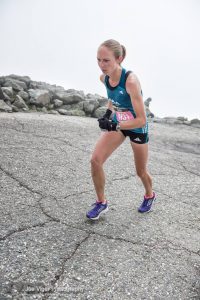 How do you deal with setbacks to your running, and how have you found is the best way to keep a positive outlook when things are challenging?
How do you deal with setbacks to your running, and how have you found is the best way to keep a positive outlook when things are challenging?
Gosh, I struggle with this one as much as most runners do. When you invest a ton of physical, mental, and emotional energy into running (or anything really), and you get derailed or the results just aren’t reflecting the effort and there is nothing to say why, it’s really easy to get down about it and sometimes question if you’ve even got it in you, and that’s fair and pretty normal I think. I can’t really sugar-coat it and say that there haven’t been any heart-breakers along the way, there have been and everybody has them. But, you have learn to roll with the punches and play the hand you’re dealt and you can’t spend time brooding over what “should have been.” I’ve kind of learned that there is nearly always a silver lining in every letdown, even if it takes a while to present itself. So that said, I suppose the biggest thing is to not let a setback crush your motivation, which is of course easier said than done. But if you really believe that you’ve got it in you to achieve a certain goal, and you’re thwarted from achieving it in one way or another, that can either deflate you or it can light a fire under your butt to try harder again the next go-around. With the right perspective–and I’m certainly not claiming to always have the right perspective myself–obstacles can really just become catalysts for bigger and better things down the line. I know that just sounds like crazy talk, but it’s true: experience enough struggle along the way, and come race day nobody in the field is going to want it as badly as you. Besides, I’m a total sucker for a good comeback story; I love seeing somebody come back out of the woodwork and blow everyone’s doors off long after everybody wrote them off, it just gives me the warm-fuzzies every time. Might as well try to be that person for yourself.
Bottom line: Rome wasn’t built in a day, so chin up and keep fighting the fight and you’ll have your day.
What was your high point and your low point of your 2016 season, and what learning moments did each give you?
I wouldn’t call 2016 a “season,” I’m going to be a bit cliché and call it a “rebuilding year.” No but seriously, it really was a rebuilding year, it was also a reassessing year too. I was rebounding from a really pretty injury-filled last year and a half or so, where I didn’t race at all, and there were a lot of life changes and such at the time as well, and I was kind of questioning how much, if at all, I still wanted to compete. So I would have to say the low point was legitimately having that question at all. The high point though was going out to Mt. Washington, kind of last minute and on a whim and without any really solid training, and still having a decent showing and really enjoying it and just getting to immerse myself into it all again after almost two years without competing. It reminded me of why I like doing this in the first place and made me realize that I didn’t want to be done with it.
What are your goals, both personally and professionally, for 2017?
So I know this guy, David Roche, great runner, great coach to quite a large number of trail runners, great writer for Trail Runner Magazine, just an all-around good dude. We corresponded a bit for several months as he was giving me some direction in getting rolling again. His philosophy is, in a nutshell, to pursue running and life in a similar fashion to a puppy: loving everyone and everything that you have in this moment right now and pursuing what you love with unbridled enthusiasm, and to “give zero f***s” about the things that ultimately don’t matter. That approach has a lot of relevance to running, work, life, all of it: yes, you should strive to get the most out of yourself and what you invest your time into, but ultimately it’s about being out there loving what you do than it is about results, winning, accolades, sponsors, promotions, raises, recognition, bling, whatever. That stuff is all window dressing, and although it’s easy to get enamored with the window dressing, it’s not important at all. So to answer the question, I know I should have a more tangible goal here, but my goal is to adhere to that approach in everything that I do: be like a puppy, and “give zero f***s” about the things that don’t matter.
Thank you so much Shannon for taking the time with our interview. With that approach, and your enthusiasm and energy for all that you love, we are sure that 2017 will be a good year! [/vc_column_text][vc_separator][/vc_column][/vc_row][vc_row][vc_column][vc_column_text margin_bottom=”10″]
Terry Chiplin, the visionary behind activacuity, provides positive coaching sessions for clients, working with athletes to enable a positive focus on their status and goals. He can also create personalized guided imagery sessions for clients, delivered as an mp3 audio file that you can listen to on multiple devices.activacuity provides a daily dose of positive guided imagery or visualization sessions. Find out what you can do when you make that mind-body connection – check out our subscription options here.
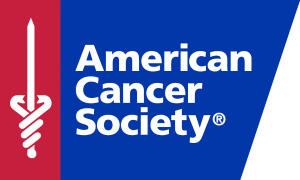 You can help raise funds for the American Cancer Society by becoming a subscriber to activacuity®. We are thrilled to announce that from February 1, 2017, we are a partner with the American Cancer Society.Use the code activacssupport2017 when you subscribe for an annual membership through our website, and $10 of your subscription goes to the American Cancer Society. We will also provide a free subscription for activacuity® to a cancer survivor for each paid annual subscription received. The Society will establish a list of cancer survivors that will benefit from the partnership, using the Patient Navigator Program.
You can help raise funds for the American Cancer Society by becoming a subscriber to activacuity®. We are thrilled to announce that from February 1, 2017, we are a partner with the American Cancer Society.Use the code activacssupport2017 when you subscribe for an annual membership through our website, and $10 of your subscription goes to the American Cancer Society. We will also provide a free subscription for activacuity® to a cancer survivor for each paid annual subscription received. The Society will establish a list of cancer survivors that will benefit from the partnership, using the Patient Navigator Program.Our goal is to raise $5000 for the Society over the partnership period.
[/vc_column_text][/vc_column][/vc_row]


